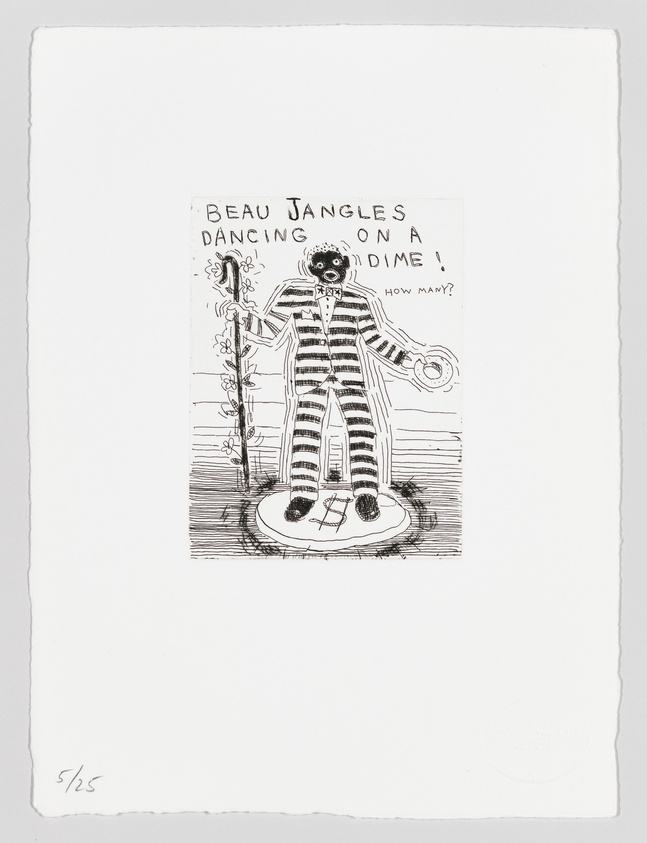0:00
Introduction to Installations
0:00
Narrator: Thek deplored New York’s gallery system and any attempt to commodify art. And at the height of his success with the meat pieces and the Tomb, Thek worried that his art was becoming too commercial. While many of his colleagues developed a signature style, he refused to become known as the “meat man.”
One glance around this gallery, and you’ll quickly see changes afoot in Thek’s work. In 1969, he received a Fulbright Scholarship, and left New York for Europe. While there, over the next decade, he produced a series of immersive installations with a group of artists known as “the artist’s co-op.” Key elements recurred in all the installations, including two exhibited in this gallery: the figure strapped to a table hanging from the ceiling and the table supported by a cartoonish dwarf.
The installations were constructed from hundreds of objects, including perishable materials, like trees and live chickens. Eventually, most of the material was thrown away.
Like many artists of his generation, Thek deliberately chose to make ephemeral work. He sought to emphasize the process of making and experiencing art—rather than creating a finished object that could be sold. But Thek’s stance was especially radical in that he never even documented his work fully.
As you begin to walk around the gallery, listen to Elisabeth Sussman and Lynn Zelevansky reflect on the issues they wrestled with as they considered how to present this work that no longer exists.
Lynn Zelevansky: It's important to just say, something Elisabeth and I have often said to each other, is that Thek built death and decay into his work and so we have to accept that, and we have to understand what we can of his work from what we have left.
Elisabeth Sussman: I think what he recognized, is that it's like being part of a great dance performance. That what might exist afterwards is a record or a document of it, but what will never exist again is the magic of someone moving in time and space in front of you as you are there. And he wanted these great art events to be like that moment that will almost inevitably have to exist in your mind. And so he did it. I mean, it's like a ballerina doing repeat performances and so he did do it four times. And he achieved a slightly different magic with each one but then the magic was over and what remains are the records. And so our challenge is to accept that.
